People: Olympic veteran: a portrait of Hamburg's Ulli Libor
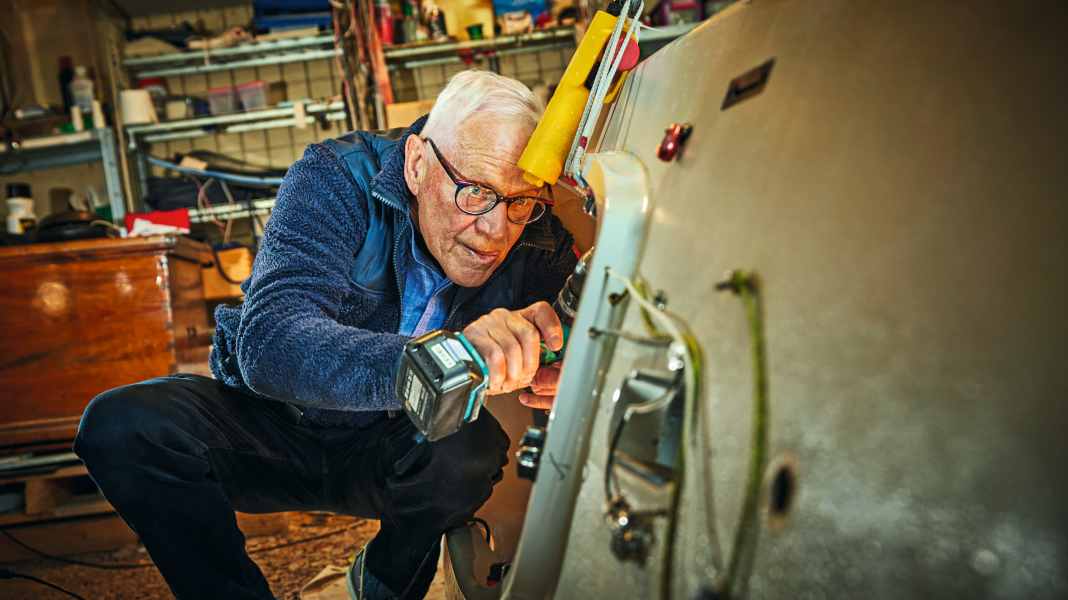
How many people can claim to have been sailing regattas at the highest level for 70 years(!)? Ulli Libor does. His life story is full of pioneering achievements, but also has its rough edges. His place of residence is unusual for a world-class sailor: the 82-year-old lives with his wife Manuela in Frei-Laubersheim, a town of 1,000 inhabitants in Rheinhessen Switzerland. The people here know the dynamic man as a dedicated restorer of old farms and a fan of historic tractors. When Libor rattles his green Porsche tractor through the lanes lined with neat half-timbered facades, the chugging of the single-cylinder 1957 can be heard from afar. No one here is likely to think that the lucky man in the driver's seat could be one of Germany's most successful sailors.
Pirate, conger and cupper, listang, FD, kite and 2.4: Libor is at home in many classes and is still successful there
Nestled in the green expanse of the wine-growing regions, Frei-Laubersheim is 600 kilometres away from Hamburg-Blankenese. Libor's sailing roots lie there on the banks of the Elbe near the Blankenese Sailing Club. The mother and her sons Klaus and Ullrich dropped anchor here at the end of 1945 after fleeing Silesia for a year and a half. They built a new life for themselves on the Elbe.
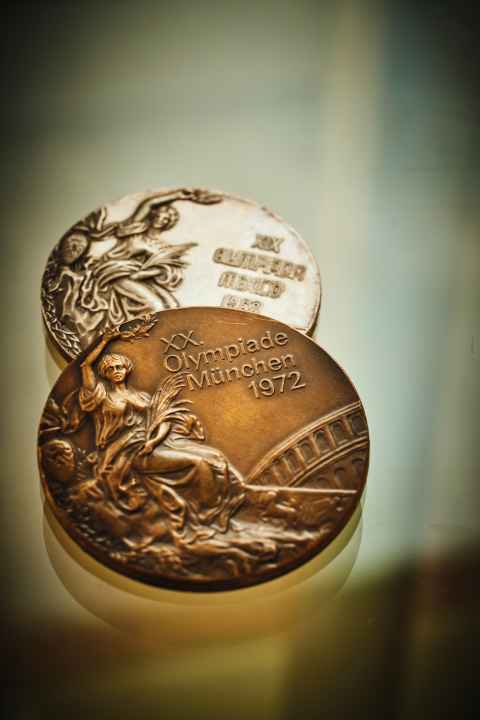
As a primary school pupil, little Ulli makes the acquaintance of fisherman Bohn. He was allowed to go fishing with him on the cutter and later even moored the 20-tonne colossus himself. "That's how I learnt seamanship early on and in a slightly different way," he recalls. Ulli's additional task was to walk through the Blankeneser Treppenviertel neighbourhood at 4 a.m. on fishing days, ringing a bell and shouting "Fresh butt, fresh butt" to draw attention to the stall at the jetties. "I slept at school," he says mischievously.
He buys his first boat for two marks. It was a "sledge". "They were such long, narrow tubs that they used to take the wounded out of the mountains during the war," he explains. Ulli has to walk a long way down the Elbe on a hot summer's day to sell it. At home, he proudly places the boat next to him and sits down on the wall, exhausted. A sunstroke causes him to collapse after a few hours. "I must have been unconscious for a few days. My parents promptly took me out of the sailing club again, saying there was no point." He saw things differently, sealed the sled with tar and got himself sticks to use as paddles and to attach a sail to. This is how he learns the basics of the sport on his own. On dinghy trips to the Alte Land, he gained sailing experience in the river area.
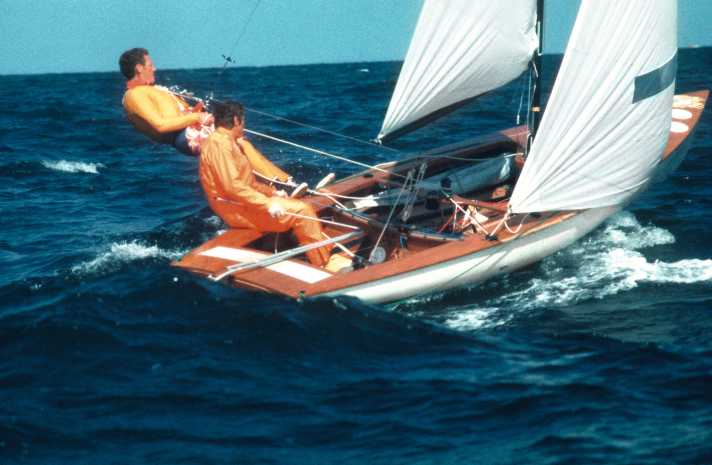
The Libor brothers' lives take another turn when they move to Hamburg-Eppendorf. Their stepfather is technical director at the university hospital. They move into a small house on the premises. While brother Klaus finds a new club home in the North German Regatta Association (NRV), Ulli flirts with hockey. Klaus and cousin Vinci manage to avert the threat of defection with a ruse: they ask Ulli to stand in as a substitute at a regatta. Ullrich Libor becomes a member of the NRV in 1954. He quickly wins his first Hummel regatta on the children's boats of the time, known as Mickys. He experienced his Kieler Woche première as a 16-year-old: "That was a great adventure: Kiel, this wave, and then I had to go on the foreship as a kite foresailor. So exciting!" His breakthrough as a helmsman came with three victories at the German Youth Pirate Championships from 1956 to 1958. At that time, there was only one class in which the best excelled.
At the same time, he trained as a mechanical engineer and married his first wife Adriane, with whom he had four children, Kaja, Hajo, Janos and Enja. He completes a second apprenticeship as a ship owner and broker and lives in London for a year. His horizon broadens.
Libor qualifies for the IYRU European Championships in the two-man dinghy with a Kieler Woche victory in the Pirate with Rolf Bartnig. Libor's victory in the Snipe, which is hardly known at home, leads to his nomination as a substitute for Naples, where he gets his first taste of the Olympics in 1960.
Two years later, two new professional challenges arise: Olympic star Paul Elvstrøm wants him as a German representative for his products, sails, Finns and more. The Dane appreciated the German and vice versa: "Paul was a great guy, so honest, so straightforward, so open, unbelievable." The second momentous encounter took place at the Hamburg boat show. Libor exhibited Finn dinghies and self-built Finn masts at a mini stand. Next door, the large shipyard representatives from Blohm+Voss are labouring on their mammoth stand with old light blue carpeting, whose holes they are painstakingly patching. During the visit, the Management Board is not impressed by the comparison between their own stand and the chic little neighbouring stand. The five-metre Hawk boat exhibited by Blohm+Voss is also hardly selling, while Libor's stand is buzzing. A few Hawks are donated to the sailing school in Glücksburg. A few days later, Libor receives a call. The shipyard wants him to sell the Hawks.
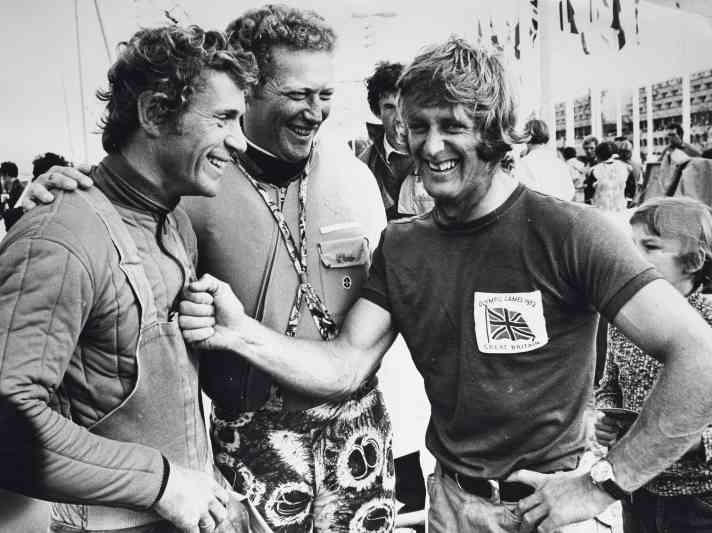
Libor finds this exciting, receives a consultancy contract and travels to Glücksburg to sail the Hawk. But it didn't happen. "I half tipped over with the boat as soon as I stepped onto the bow of the box. I didn't need to sail it. And I didn't want to sell it either." Which he bluntly tells his new clients. But they insist on contract fulfilment. Libor is assigned a desk on the top Blohm+Voss design engineers' floor, where 40 men sit with him at drawing boards and sketch. The uplifting feeling does not compensate for the impossibility of the task. Technical Director Van Rieth comes in every fortnight, smoking a cigar, and enquires about the progress of the Hawk. Regardless of Libor's answer, the request is: "Make sure you sell some." Design legend Klaus Feltz smiles with Libor. "A brilliant mathematician," Libor knows.
Months later, the Management Board in the USA is able to terminate the licence agreement for the Hawk. The longed-for signal to Feltz and Libor: "So, now we're going to make our own boat out of plastic according to your ideas." This is the starting signal for the Conger. Libor was able to finance his popular "paint shop" in Blankenese with the commission for the rising sales figures of the bestseller, which was also appreciated by the future Chancellor Helmut Schmidt. There he builds masts, repairs and tinkers. The workshop bears the colourful name because the previous owners, the Breckwoldt family, sold paints. Libor took over the space after a storm surge and pragmatically filled in the leaking sea of paint with a load of gravel, on which Finn dinghies were then stored for sale. A few gardens away, he has erected a ten-metre test mast. "It was so thin that I could adjust every bend. I had a lot of wires and spreaders attached. I could tell everyone: 'Come here, we'll pull up your sail and take a look at it on land'." He shares the sail work with his mother: "I glued, she sewed."
"When you meet the Queen, please make sure you don't make a servant. You are a hamburger, so walk straight!"
Libor learns another important lesson in 1965. The Queens Cup is organised for the Queen of England's first visit to Hamburg. Libor wins the Queens Cup, fooling the establishment. Hannes Ravenborg, eighth at the 1960 Olympics, congratulates him fairly and gives him a tip: "When you meet the Queen, don't forget that a Hamburger has never bowed to a king. Please make sure you don't make a servant. You're a hamburger, so walk straight." Libor sticks to it, never forgets the sentence.
After losing the FD elimination round against the GDR teams at the 1964 Games, Libor prepares for the 1968 Olympics: "I wanted to know." He buys the gold FD from Helmer Pedersen for 4,000 marks. The New Zealander had beaten Keith Musto and Buddy Melges to silver and bronze in 1964. But the boat, with which Libor was the best German starter at the pre-Olympics without sponsorship, disappeared on the return journey. This puts him in a tight spot. He urgently needs a coaster for the competition. Together with the Hein boatyard, sailing friend Dr Detlef Kreidel and foresheet man Jo Möller, he develops an FD that will inspire generations. He wins the elimination.
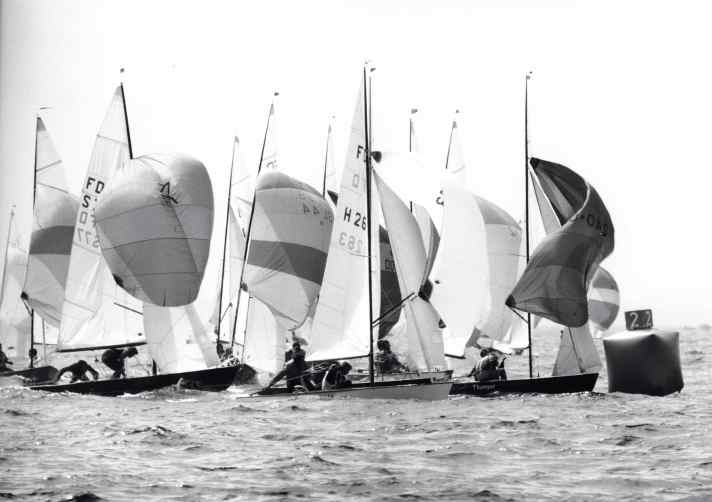
In Acapulco in 1968, Libor parried verbal skirmishes on land twice as well before the first Olympic starting shot. The Dutch tease: "Have you heard that Pattison has a centreboard with a trim tab at the back?" Not only has Libor long known that the Dutch are working on it themselves. He also pulls his own sword out of his pocket and grins as he demonstrates the trim tab he has already installed. At their Olympic premiere, Ullrich Libor and Peter "Lumi" Naumann are only beaten by Pattison's crew. Their silver medal is great.
In the mid-sixties, Libor was infected by the new tonne-tonne euphoria in Germany. After Hannes Beilken's "Optimist" won the one-tonne cup in 1967, half-tonne and quarter-tonne vehicles became fashionable. During a ten-day trip through Mexico with FD mate and world champion Ted Turner and shipyard owner Andy Green, Libor discovers a centreboard named Mustang. His good eye told him that it was an almost perfect design for a quarter-tonner project. He orders a boat, but it doesn't arrive for ages. Libor doubts that the Mustang can be integrated into the formula anyway. Karl Feltz designs something similar, but new. When finding a name, Libor throws out the "M", inserts his first letters and calls the projectile Listang. They win sensationally at the stormy 1969 Quarter-Ton Cup in Holland, with FD competitor and friend Pattison on board, along with YACHT editor-in-chief Harald Schwarzlose and tester Peter Schweer.
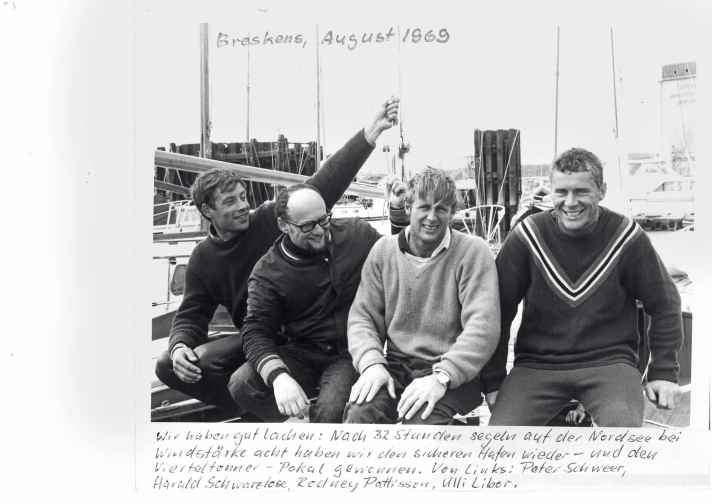
In 1972, Libor went for gold in his home waters of Kiel, but after an Olympic rollercoaster ride through light winds and fog, he won bronze after the shock of the Munich bombing. This hurts him more than he realises: "For me, that was an absolute defeat at the time. It was no improvement on silver in 1968."
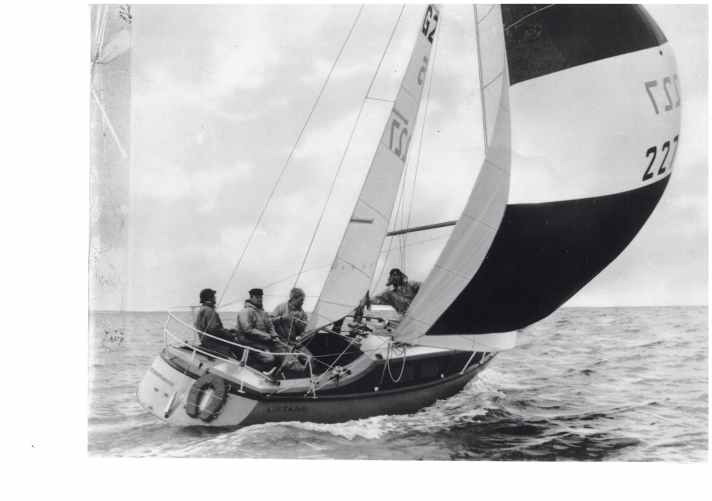
"I saw waves far above mast height. If I didn't steer on the spot, the boat would lie in the water up to the spreaders"
In the Olympic year, Libor joined Raffay Marina, which he ran as the sole shareholder in Wedel from 1976 to 1981. In 1979, he received a handwritten letter from Norbert Lorck-Schierning, who wanted to hire him as helmsman for his Frers design "Jan Pott". Libor accepts the challenge. They qualify for the 1979 Admiral's Cup - the deadly race whose Fastnet Race claims 19 lives in the storm of the century. Although the Cup teams had no fatalities, they were also fighting for survival. Libor remembers: "They woke me up in the morning. I was supposed to take over. I opened the hatch and saw waves far above mast height. I wondered if I was dreaming, I seriously pinched myself." Sailing friend Bernd Faber is Libor's stand-by, lying at the front of the cockpit and putting his arm around a winch every time a wave comes over. Everyone else waits below deck for safety reasons. "If I didn't steer on the spot, the boat would lie in the water up to the spreaders," says Libor, recounting his epic battle with the wave monsters. Although only one and a half metres apart, Libor and Faber have to shout at each other in the roaring noise in order to understand each other. Suddenly Faber shouts: "Here comes a real one." Libor instinctively drops to his knees and clings on tightly. "I thought someone was going to strangle me," he remembers. By then, the "Jan Pott" had already capsized and his lifejacket had come undone. Libor is still kneeling when he catches his breath. Faber is gone. "I saw the mast to windward and thought: 'Holy shit, we've lost it. But where is Bernd?"
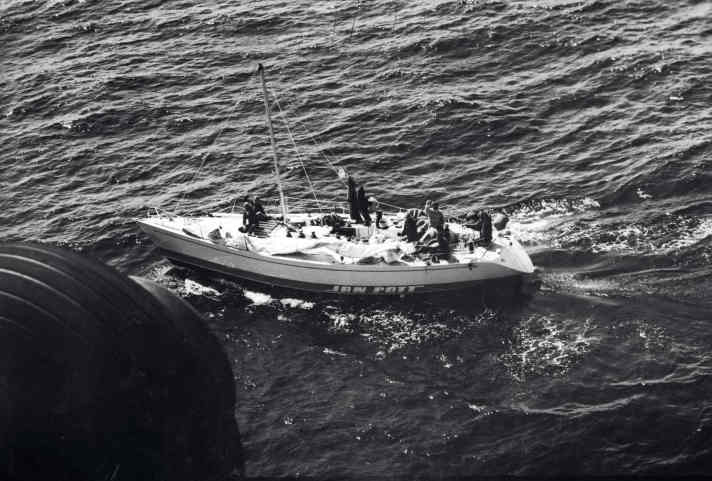
Libor keeps calling for him and remembers: "It was dead quiet on board, the resistance was gone. Then I discovered Bernd hanging on the long line on the outside of the ship." The hatch bangs open forward. The bosun shoots out first. Two follow and rush aft, allowing Faber to swim almost elegantly into the boat with the next wave. The damage: the mast is history. The navigator has torn off almost all the screwed-on equipment below deck while flying through the room, water is running out of the microphone of the VHF system like a shower head, communication is dead. One of them has knocked out a tooth, Faber has injured his leg. The deck is full of hydraulic oil. They can only move by crawling on their stomachs. In the evening, they remember that they heard music from a tape with a radio receiver while packing the sails. With a wire and an emergency aerial, they manage to hear about the disaster that has occurred. They reach their destination harbour of Plymouth under their own steam.
In 1984, Libor ended his big boat time with the Sardinia Cup victory on "Container". Albert Schweizer, who was there as a young sailmaker, says: "Ulli had healthy ambition and was a real gentleman sailor, whom I admire very much." Libor then moved into an honorary position. He had already worked to promote young Olympic talent with good concepts at club and association level and wanted to pave the way for young Olympic sailors. He spent eight years as DSV Vice-Chairman and Chairman of the Olympic Sailing Committee. In 1984 and 1988, he was team leader at the Games. Professionally, he spent five years building up and marketing the windsurfing brand "Fanatic" owned by "Container" owner Udo Schütz worldwide, before becoming one of the driving forces behind the German America's Cup campaign between 1987 and 1989: "We had 12.9 million marks in pledges. Then came all the trouble with Dennis Conner's catamaran, the voices that said they would only start with 30 million. That had no future."
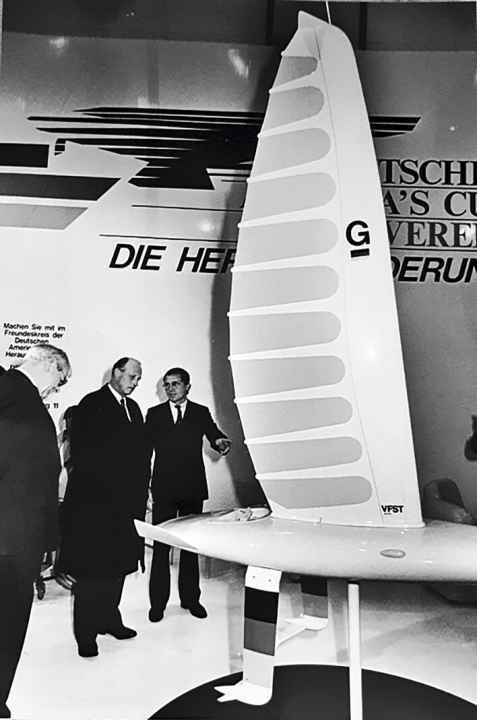
What follows is a radical break with his previous life. For Libor, it is logical because his qualities as a manager rather than a sailor are in demand. In the wave of golf's success, he came on board as Managing Director of the German Golf Association in 1989. It was tough at first. He had many opponents who did not want a sailor in the golfers' organisation. Libor bites his way through encrusted structures and refuses to bow to the headwind. Whether he is appointed president because of a YACHT article with the headline "A breath of fresh air for golf", focussing on sailing instead of golf, or other hostile pitfalls are woven: Libor has come to stay. He did not sail any regattas for 14 years, built a new life for himself and married his wife Manuela in 1991. Their daughter Anna was born in 1993. Since then they have lived in the wine village of Frei-Laubersheim. Son Jan is born in 1998. Libor has a good relationship with all six children. His hobby of travelling has taken him to more than a hundred countries. He lives his life as if he were ten people and not one.
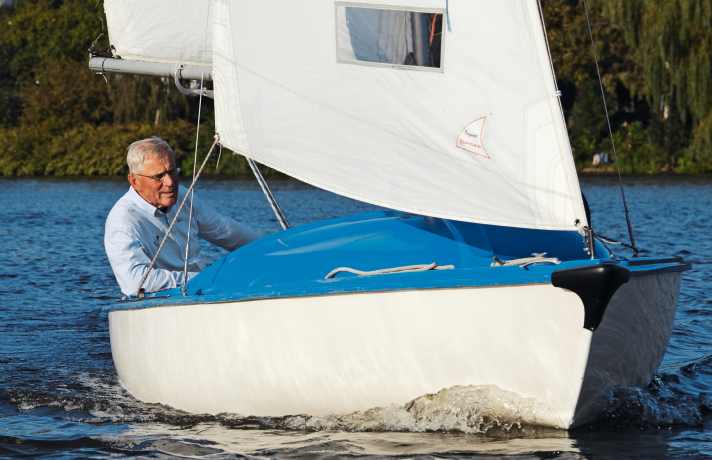
When retirement came into sight in 2005, Libor prepared his return to regatta sailing. Intensive years of dragon sailing followed, with a runner-up finish in the 2007 World Championship and victories such as at the Régates Royales in Cannes. Manuela Libor is on board with a lot of trade fair experience as a former assistant to the management of boot, organising three legendary Hanseatic Lloyd Dragon Grand Prix in Strande for the benefit of Queen Silvia of Sweden's Childhood Foundation. Her visits are reminiscent of the time when she met her husband as a hostess at the 1972 Olympic Games. The anniversary is being celebrated this year with "50 years of the Olympics". Libor will be part of the FD at the regatta off Kiel in mid-August, just like in 1972.
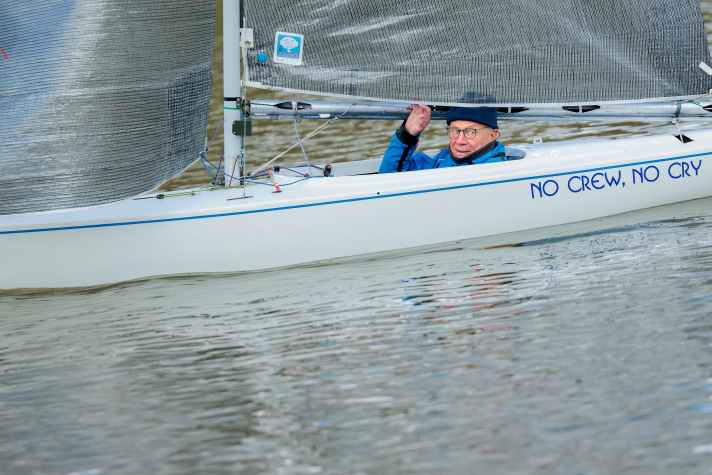
Libor's latest life jibe followed in 2014, when he switched to a 2.4 metre keelboat. "I was looking for a one-person boat so that I could take part in regattas independently," he explains. Libor is among the top ten in the inclusive class and enjoys optimising the smart keel yacht. This also connects him with sailmaker Frank Schönfeldt, who grew up in Blankenese and to whom he provides meticulously compiled data for the Clown sails, which are coveted in 2.4 circles. Both are Conger men. One co-created the Evergreen, the other is a twelve-time German Conger champion and wants to fly the Conger on foils on the Alster in autumn, project name "Regnoc". Schönfeldt pays tribute to the Conger's co-inventor Libor: "Ulli was an Olympic sailor and is an icon. He always stood above us and yet was close to the people - a great sailor."

